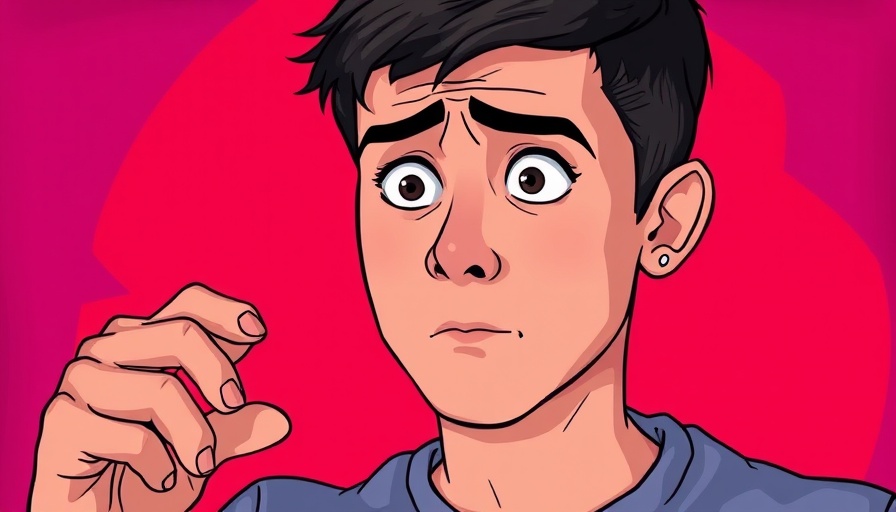
Understanding Visual Snow Syndrome: A Hidden Struggle
If you've ever noticed static-like visuals filling your field of vision, you might be experiencing something called visual snow syndrome. For many, the condition resembles the snowy fuzz seen on an old television set, appearing as shimmering dots that can obstruct one’s view. This peculiar phenomenon may sound harmless, but its impact can vary significantly. Some individuals find it to be a mild distraction, while for others, it can become an overwhelming barrier to daily activities like reading and driving. This article delves deeper into visual snow syndrome, shedding light on its symptoms, causes, and the importance of recognition.
In 'Visual Snow Syndrome Explained (I have it),' the discussion dives into the nuances of this condition, providing insights that sparked deeper analysis on our end.
What is Visual Snow Syndrome?
Visual snow syndrome is a neurological condition characterized by the continuous perception of “visual snow.” This static sensation, often experienced along with other symptoms such as palinopsia (afterimages), photophobia (light sensitivity), and enhanced entoptic phenomena (increased awareness of floating shapes), allows for a complex interaction between visual perception and neurological function. It's a condition that remains largely misunderstood, even among health professionals, which can add to the frustration of those who experience it.
Painful Misunderstanding: The Impact of Misdiagnosis
As Dr. Allen highlights in his video, many individuals suffering from visual snow syndrome face the challenge of conveying their experiences to healthcare providers who may not be familiar with the condition. Diagnosis often involves the patient describing their symptoms clearly and persuasively, which can be daunting. As many medical texts still lack comprehensive information about visual snow syndrome, patients may find their experiences invalidated. This lack of recognition can lead to emotional distress, emphasizing the need for better awareness and understanding within the medical community.
Common Symptoms Associated with Visual Snow Syndrome
Symptoms of visual snow syndrome can extend beyond the initial visual disturbances. Many affected experience:
- Palinopsia: Seeing trails behind moving objects, which can significantly disrupt focus.
- Photophobia: Discomfort in bright light settings, making simple environments challenging to navigate.
- Secondary Symptoms: Conditions like tinnitus (ringing in the ears), migraines, and balance issues frequently coexist with visual snow syndrome, exacerbating the experience of living with this condition.
Understanding these associated symptoms is crucial in advocating for personal health and seeking appropriate care.
The Quest for Treatment: What’s Next?
As of now, there is no universal treatment for visual snow syndrome, but awareness and connection with like-minded individuals can provide vital support. The identification of common triggers, such as stress and dietary choices, allows individuals to minimize symptoms proactively. Academic and clinical research continues to evolve, so staying informed about advancements in symptom management is key to navigating this complex condition.
Engaging with Community Resources
Engagement with patient communities such as the Visual Snow Initiative (VSSI) can facilitate greater understanding and encourage networking among individuals facing similar challenges. These platforms offer resources for education, support, and, importantly, advocacy—aiming to elevate the conversation around visual snow syndrome.
Your Voice Matters: Advocating for Awareness
Finally, sharing experiences with visual snow syndrome isn’t just beneficial for personal healing but necessary for community growth. By sharing your story—whether through social media, local support groups, or direct engagement with healthcare professionals—you can help shine a light on this often hidden but very real condition. Every story contributes to a growing narrative that augmenting visibility can reduce stigma and increase understanding.
In conclusion, recognizing and understanding visual snow syndrome is an essential step in improving the lives of those affected. By fostering open dialogues and comprehensive education, we can empower each other to take proactive steps towards managing this condition. Connecting with knowledgeable healthcare professionals and supporting one another can lead to better outcomes, making it easier to navigate daily life despite visual challenges.
If you resonate with these experiences, consider seeking out communities and resources that specialize in visual snow syndrome. Your voice is vital in this growing conversation about understanding and treating this condition!
 Add Row
Add Row  Add
Add 




Write A Comment